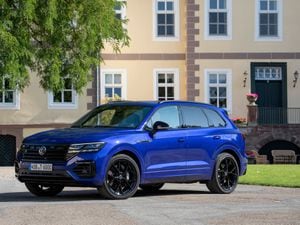The latest plug-in hybrids to hit the market
Fancy trying out an electrified powertrain with a combustion-engined safety net? These are some of the newest options on the market.

The plug-in hybrid market is expanding ever more rapidly, with new models seemingly added to the list with each passing week. Though many manufacturers are putting an emphasis on fully electric models, the plug-in hybrid is viewed by many as a good stepping stone between a conventionally-powered car and a full EV.
Needless to say, there are a lot to choose from at the moment. So we’ve picked out some of the latest to hit the market.
BMW X2 Plug-in hybrid

>
BMW, like so many other manufacturers, is in the process of electrifying a whole host of its core models. The X2 crossover is one of the latest, benefitting from a new 1.5-litre three-cylinder petrol engine which is linked up with an electric motor and batteries.
BMW says it should be able to travel for up to 35 miles on a single charge, while topping up the batteries completely will take around five hours via a three-pin socket.
Ford Kuga PHEV

>
Ford might’ve been a little behind the curve with its quest for electrification, but it is picking up the pace. Take the Kuga PHEV. It’s an electrified version of the firm’s ever-popular SUV, bringing the practicality people want with far lower running costs than normal.
The combination of 2.5-litre petrol engine and electric motor means the Kuga kicks out an impressive 222bhp, yet will return 35 miles of electric-only range.
Mercedes-Benz E300 de

>
In a change from the normal, Mercedes-Benz has used a diesel engine as its starting point for a hybrid powertrain, linking this with an electric motor and batteries for the best possible economy figures.
A 13.5kWh battery provides enough power for 34 miles of electric-only range, while the E300 de’s CO2 emissions figures are impressively low at 41g/km.
Range Rover Velar P400e

>
The Velar is one of Range Rover’s latest cars to benefit from a plug-in hybrid powertrain, following on from a number of other vehicles in its line-up that now boast electrified setups. With 398bhp the plug-in hybrid Velar is impressively punchy, while the switch between electric and petrol power is barely noticeable.
If you want one of the classiest-looking PHEVs around, then the Velar is the car you’ll want.
Renault Captur E-Tech

>
Renault might be deploying mild-hybrid technology across its range of vehicles to improve economy and emissions, but only a handful actually get a full-fat plug-in hybrid setup. The Captur is one such vehicle, boasting a 1.6-litre engine linked to two electric motors and a 9.8kWh battery.
Renault claims a 31-mile electric-only range and up to 188mpg, with CO2 emissions of just 34g/km ensuring it’s an appealing option with company car drivers.
Suzuki Across

>
The Across shares much of its underpinnings with Toyota’s recently-introduced RAV4, meaning its powered by a 2.5-litre petrol engine with an electric motor and batteries resulting in a total output of 302bhp – making it Suzuki’s most powerful car to date.
As well as being able to go from 0-60mph in under 5.8 seconds, the Across will also return an impressive 46 miles on battery power alone.
Volkswagen Touareg R

>
Taking the title as the most powerful production Volkswagen to date, the Touareg R is a car that shows plug-in hybrids needn’t be without a performance edge. A petrol V6 links with an electric motor and batteries, allowing the Touareg R to go from 0-60mph in just 4.9 seconds.
Volkswagen claims it’ll return up to 94.2mpg while travelling up to 28 miles on electric power alone. A full charge will take around eight and a half hours via a three-pin plug.





